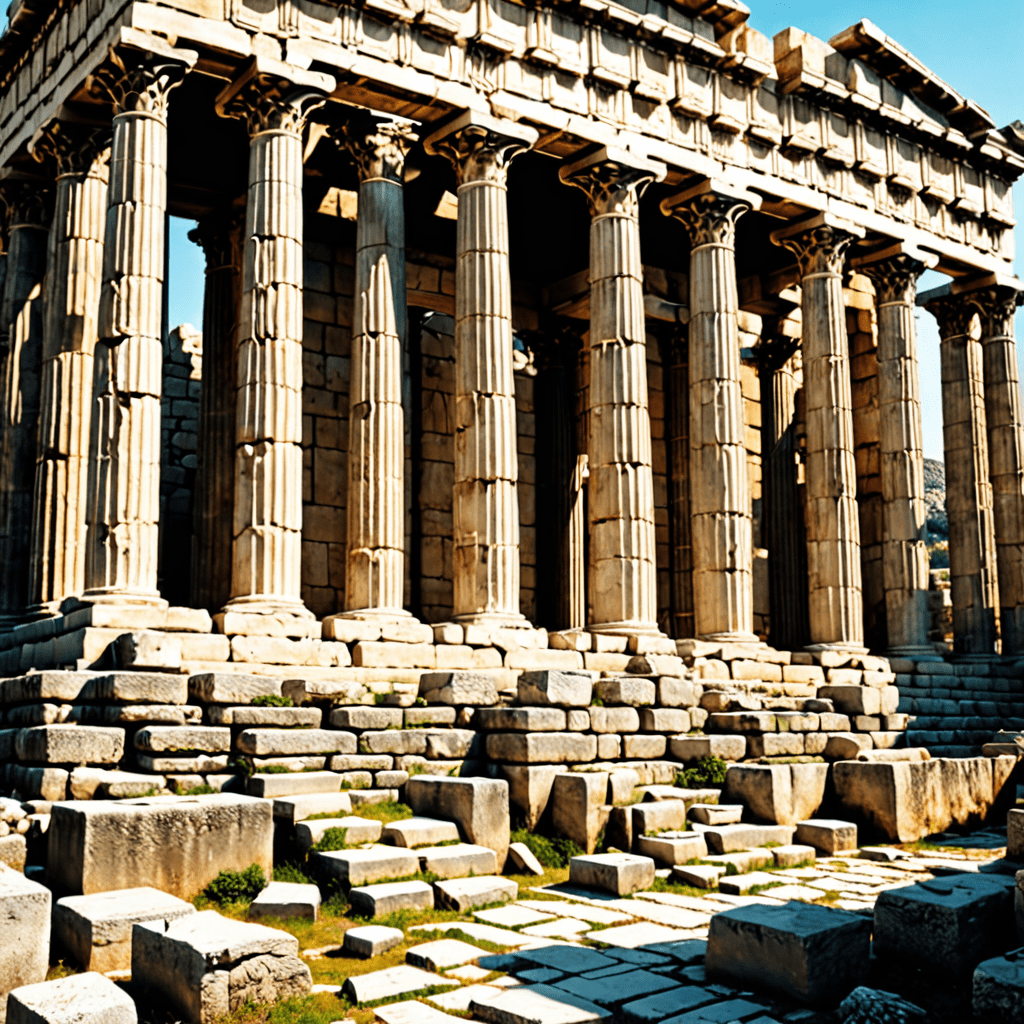The Tengu and the Shaman: Interactions and Rituals in Korean Mythology
I. Introduction
Korean mythology is a rich tapestry of stories, beliefs, and practices that have evolved over centuries. It encompasses a wide range of mythical figures, deities, and spiritual elements that reflect the culture and history of Korea. Among these figures, the Tengu and Shamans hold significant importance, representing the intersection of the spiritual and the earthly realms.
The Tengu, often depicted as bird-like creatures or supernatural beings, play a multifaceted role in Korean folklore, while Shamans serve as mediators between the human world and the spirit world. This article aims to explore the interactions and rituals involving Tengu and Shamans, shedding light on their significance in Korean mythology and contemporary culture.
II. The Tengu: Origins and Characteristics
A. Definition and historical context of Tengu in Korean culture
Tengu are mythical creatures that have their roots in ancient Korean and Japanese folklore. In Korea, they are often portrayed as protectors of the mountains, embodying both wisdom and mischief. Traditionally, Tengu were believed to possess supernatural powers and were associated with the practice of martial arts.
B. Comparison with Tengu in Japanese mythology
While there are similarities between the Tengu in Korean and Japanese mythology, they differ in various aspects:
- Korean Tengu: Often depicted as protective spirits of the mountains, they can also be tricksters who challenge human characters.
- Japanese Tengu: Usually portrayed as more malevolent beings, they are often linked to the deception of travelers and have a distinct association with Buddhist practices.
C. Symbolism and attributes of Tengu
Tengu symbolize a range of characteristics, including:
- Guardianship: They are seen as protectors of nature and the mountains.
- Wisdom: Their knowledge of the spiritual world grants them a position of respect.
- Mischief: Tengu’s trickster nature often leads to humorous or cautionary tales.
III. The Role of the Shaman in Korean Society
A. Definition and historical significance of Shamans in Korea
Shamans, known as “Mu” or “Mudang” in Korean, are spiritual practitioners who serve as intermediaries between the human and spirit worlds. Historically, they have played a crucial role in Korean society, especially in rural areas where their rituals and healing practices were essential for community cohesion.
B. Types of Shamans and their roles in rituals
There are several types of Shamans in Korea, each with distinct roles:
- Female Shamans (Mudang): Predominantly women, they conduct rituals to heal the sick, appease spirits, and communicate with ancestors.
- Male Shamans: Less common, they often lead ceremonies that require specific spiritual authority.
C. The Shaman’s connection to the spiritual world
Shamans are believed to possess the ability to enter trance states, allowing them to communicate directly with spirits, ancestors, and deities. This connection is vital for performing rituals, such as:
- Healing ceremonies
- Rituals for good fortune and protection
- Divination practices
IV. Interactions Between Tengu and Shamans
A. Traditional beliefs and narratives surrounding Tengu-Shaman relationships
Traditional narratives often depict interactions between Tengu and Shamans, showcasing a complex relationship marked by both collaboration and conflict. Shamans may invoke Tengu for protection during rituals or seek their wisdom in spiritual matters.
B. Depictions of interactions in folklore and literature
Folklore and literature frequently illustrate these interactions, portraying Tengu as mentors or adversaries to Shamans. Stories may highlight the Shaman’s challenges in dealing with Tengu’s trickster nature, emphasizing the balance of power between the two.
C. The duality of Tengu as both a protector and a trickster
The dual nature of Tengu encapsulates their role in mythology. They can be:
- Protectors: Assisting Shamans in their endeavors and guarding sacred spaces.
- Tricksters: Testing the resolve and wisdom of Shamans through challenges or deceptions.
V. Rituals Involving Tengu and Shamans
A. Overview of specific rituals that incorporate Tengu elements
Various rituals in Korean culture incorporate Tengu elements, often aiming to harness their protective qualities. Some notable rituals include:
- Mountain pilgrimage rituals where devotees seek Tengu’s blessings.
- Festivals celebrating nature and the spirits residing within, invoking Tengu for protection.
B. The significance of these rituals in community practices
These rituals foster a sense of community, allowing participants to connect with nature and the spiritual realm. They emphasize the importance of Tengu as guardians of the environment, reflecting the cultural values of harmony with nature.
C. Case studies of prominent rituals
One prominent example is the “Shinjeong Ritual,” where Shamans invoke Tengu to ensure bountiful harvests and protection from natural disasters. This ritual highlights the intertwined nature of agricultural practices and spiritual beliefs in Korean society.
VI. Modern Interpretations and Cultural Representations
A. The evolution of Tengu and Shaman imagery in contemporary culture
In modern times, the imagery of Tengu and Shamans has evolved, appearing in various forms of art, literature, and media. They are often romanticized or reinterpreted to fit contemporary themes, reflecting changes in societal values.
B. Popular media representations and their impact on public perception
Films, television shows, and comic books often depict Tengu and Shamans, influencing how the public perceives these figures. This representation can sometimes stray from traditional narratives, focusing more on entertainment than cultural accuracy.
C. The role of Tengu and Shamans in modern spirituality
Contemporary spiritual practices may still draw from Shamanistic traditions, with some individuals identifying as modern Shamans while incorporating Tengu symbolism into their rituals. This blending of old and new reflects an ongoing interest in spiritual connectivity and cultural heritage.
VII. Comparative Analysis with Other Mythical Beings
A. Similarities and differences with other mythological creatures in East Asia
When comparing Tengu and Shamans with other mythical beings in East Asia, several similarities and differences emerge:
- Similarities: Many cultures in East Asia have nature spirits and deities that act as guardians or tricksters.
- Differences: The specific attributes and roles of these beings can vary significantly based on cultural narratives.
B. The broader context of mythical creatures in Korean, Japanese, and Chinese mythologies
Mythical creatures like Tengu share the stage with various beings from Korean, Japanese, and Chinese mythologies, each serving unique purposes within their respective cultures. This interconnectedness highlights the fluid exchange of ideas across borders.
C. Influence on shamanistic practices across cultures
The influence of Tengu-like figures can be seen in shamanistic practices not only in Korea but also in neighboring countries, where similar beliefs about nature spirits and mediators exist.
VIII. Conclusion
In summary, the Tengu and Shamans play pivotal roles in Korean mythology, embodying the intricate relationships between nature, spirituality, and community. Their interactions, rituals, and representations reflect cultural values that persist through time.
Understanding these figures enhances our appreciation of Korean cultural heritage and spirituality. As interest in mythology and spirituality continues to grow, future research may uncover deeper insights into the evolving narratives surrounding Tengu and Shamans, ensuring their relevance in both historical and modern contexts.




